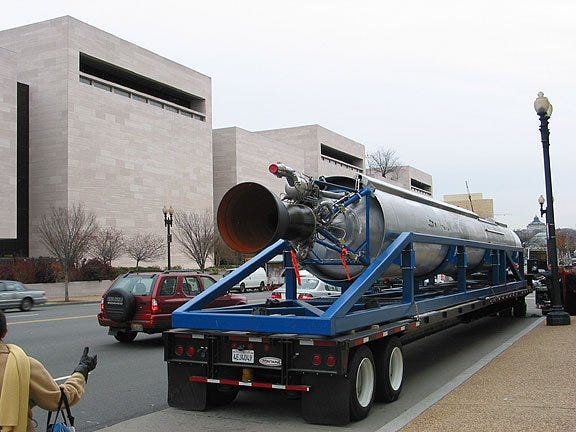We can get humans to Alpha Centauri by the end of the 21st century.
Not that it will be easy. Alpha Centauri, our closest stellar neighbor, is a long way away. 4.37 light-years to be precise. To put this in perspective, the Voyager 1 spacecraft, which was launched in 1977 and is now the farthest man-made object from Earth, has been traveling for over 44 years and has only traveled about 0.002 light-years (or 18.8 billion kilometers).
To traverse this mind-boggling distance, we need to develop interstellar propulsion technologies. This will require not only a revolution in physics but a revolution in how society approaches these problems. We will need to think critically about our models of the universe so that we can peer through their cracks and find a way to deploy one of the following solutions:
Create a stable wormhole
Build and sustain civilization on a generation ship
Generate exotic matter, and use it to power an Alcubierre Drive
Each of these approaches shares one thing in common: they are widely perceived to be intractable problems. Overcoming this perception is a prerequisite to even have a chance at developing interstellar propulsion technologies. Here are some ways this can be done:
Demonstrate tangible progress on one of these fronts
Back in the days when SpaceX was struggling for funding, they drove an early prototype of their Falcon 1 rocket in front of the Air and Space Museum in Washington D.C. By showing off the physical rocket to regulators, space enthusiasts, and industry experts SpaceX sent a message: we are taking this seriously. Falcon 1 was no longer vaporware—it had actually been built. They showed the world that it was possible for a private spaceflight company to manufacture a full-scale launch vehicle. This generated momentum, allowing SpaceX to recruit more talented engineers to its cause.
In 1994, Miguel Alcubierre, a Mexican theoretical physicist, demonstrated the possibility of creating a warp drive. He did this by finding a solution to Einstein’s field equations that would contract space ahead of a spaceship and expand it behind, placing it inside of a pocket of space that was traveling faster than the speed of light. Although this warp drive would require a type of matter with negative mass to function, Alcubierre demonstrated that it was possible to make progress on this problem.
There is another way to demonstrate progress: you can highlight strides that have already been made in this field. Tell your friends. Write blogs. By bringing conversation of interstellar travel into the popular lexicon, more people will believe it is possible and will be willing to help. It’s much easier for people to share ideas if it’s what everyone is talking about.
Build an interstellar propulsion community
In the early stages of an idea’s life, it must be allowed to grow without the cold wind of skepticism blowing in its face. It must be treated as the delicate specimen that it is until it is strong enough to withstand and benefit from constructive criticism.We must create a safe space for these ideas to take shape. A nursery for interstellar propulsion ideas. What would happen if we built a community that had a subculture centered around building on each other’s warp drive ideas? We should build this community ASAP. How do we do this? I think this post by Henrik Karlsson has the right idea. In it he describes how writing online is a search query to find people who share your niche interests. By writing about this stuff online, people who want to think about interstellar propulsion can find one another, and can start to shape this community.
Another way to build this community is to engage with science fiction writers and their audiences. Science fiction can help to inspire people and make them believe that interstellar travel is not only possible but inevitable. It has to be the right kind of science fiction, though. We need more shows like Star Trek: The Next Generation, and fewer shows like Black Mirror. We need stories that inspire us to build a future that is cooperative, mature, and wonderful rather than stories that are power-seeking, jaded, and selfish. Technological advancement alone is not enough.
Once we get these communities off the ground, we can create open-source projects to share the research with a wider audience. We will thereby foster a culture of collaboration. The open-source results of this research will showcase our progress, attracting talented contributors from all over the world and accelerating our efforts.
By combining our exponential mindset and technology with the creation of a strong and focused propulsion community, humanity can reach Alpha Centauri by the end of the century! The stars are the limit. What’s the most exciting future? It’s the future where we build the United Federation of Planets, and go where no one has gone before.
image credit: @spaceref




Create energy one side and another side vacuum energy will be created, use them to propel spaceship
How should we start? What’s the first problem you would tackle?